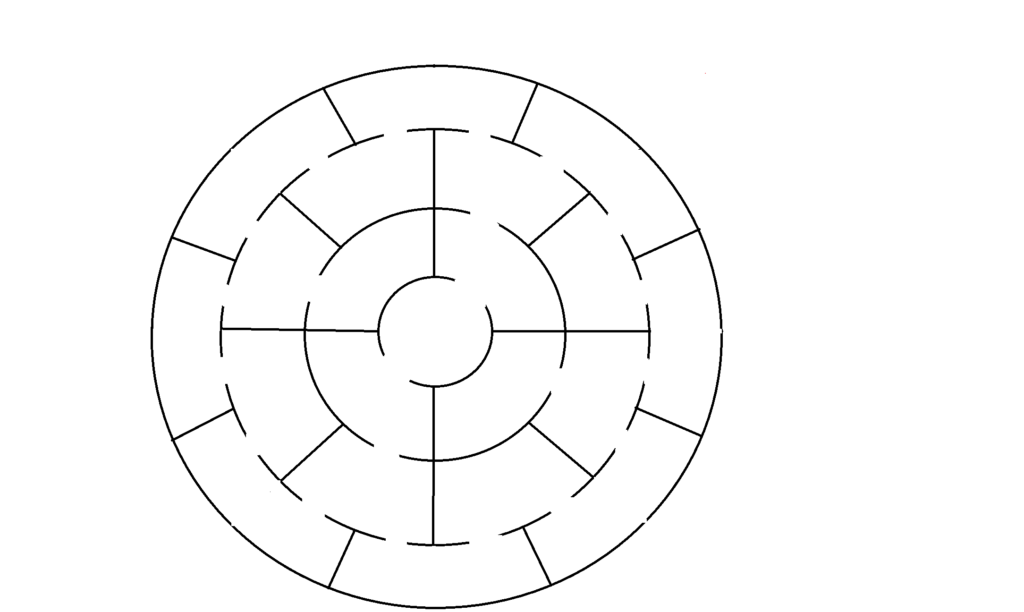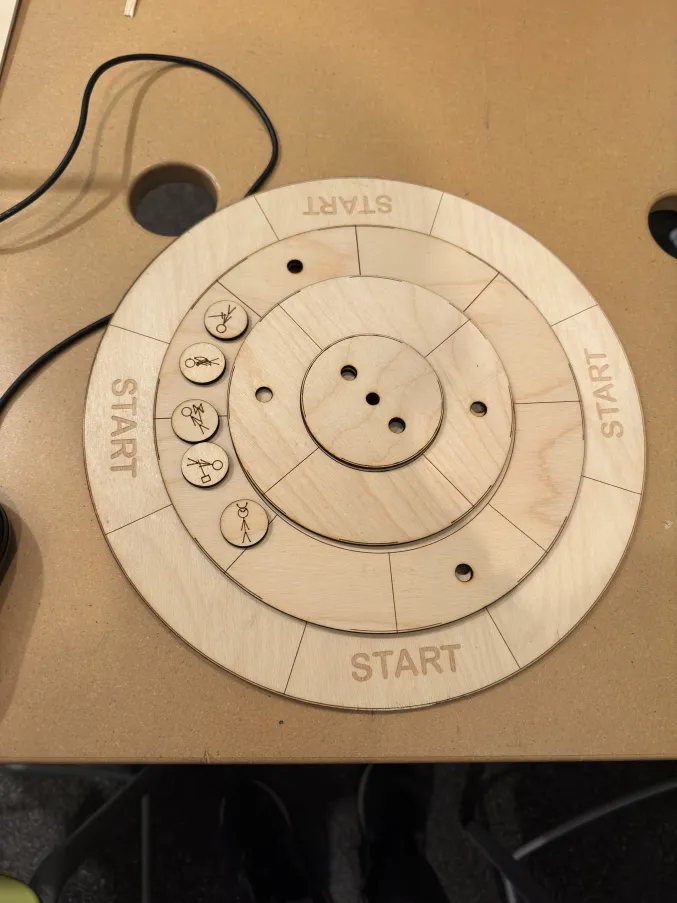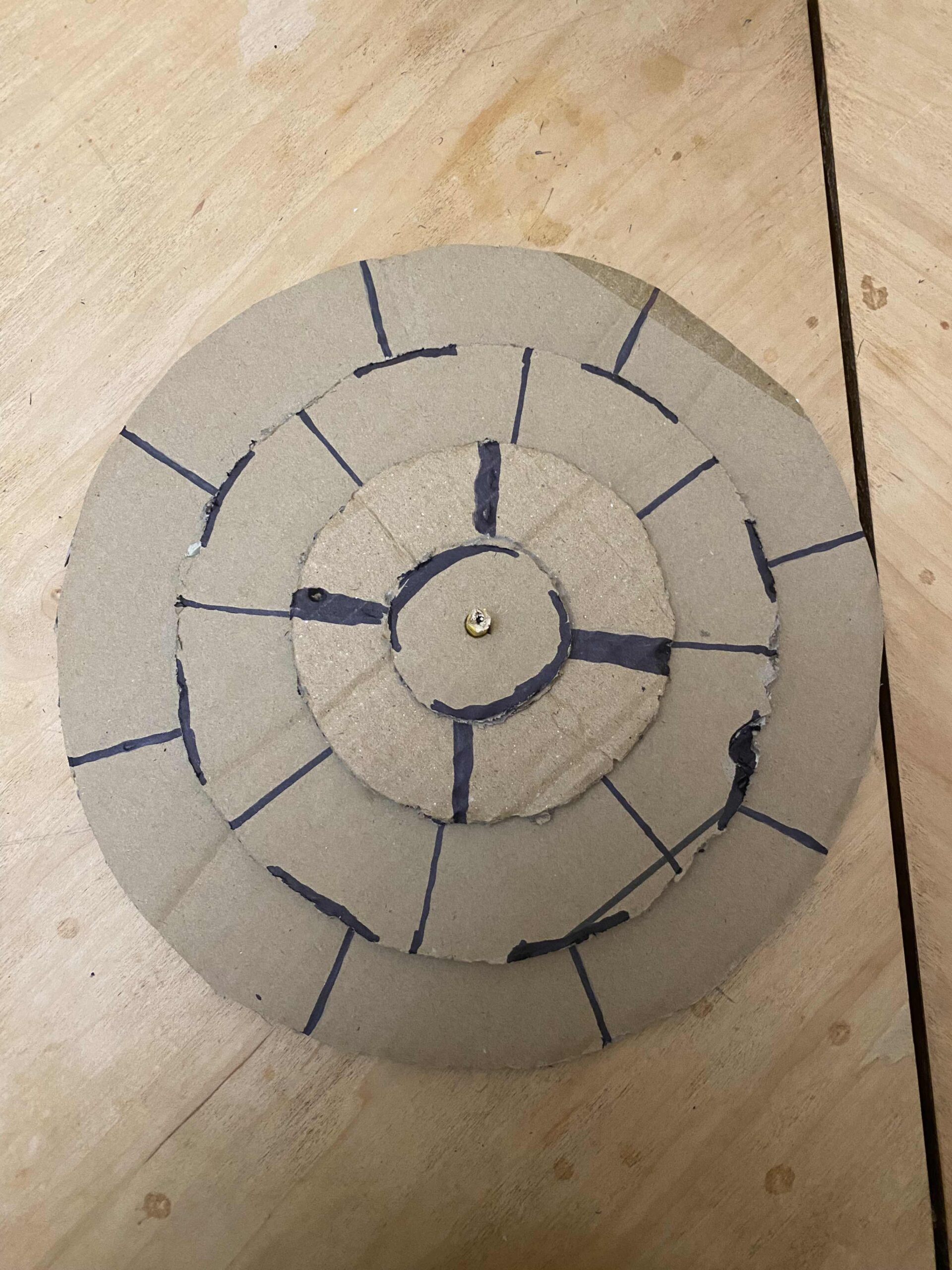by Will Traband and Spencer O’Brien
When I first talked to my partner Spencer, I was shocked to learn he already had a basic idea for the theme of our game. Our game is meant to be a representation of King Minos’ Labyrinth, and you and a friend must explore it together. Spencer texted me most of the basic ideas for the game’s mechanics and we decided to meet when we got the chance.
The game takes place on a board made of four stacked circles which the players could move around. Players take turns either moving one space, rotating one of the circles by one spot, or moving the minotaur by one. Speaking of, the minotaur starts in the center and can be moved around by the player on their turn. Spencer also had the idea to add powers for each player, although as of now that has not been implemented. The goal is similar to Chinese checkers where you want to get from your starting spot to the other player’s spot on the other side of the board.


At this point, I began to feel self-conscious. I had been out of town and as such had not done anything yet, and I was not going to let my partner do all the work. I have MS Paint and Zoom for a reason. We discussed together specifically which areas should be open and which should not be. We debated mechanics like a potential timer or collapsing rooms. We also debated specifics such as if the minotaur should basically just be a tile blocker or if it should send a player back to their start.
In the end, we decided on a few things. Some of these mechanics would just have to be hammered out based on playing the game a few times because it is extremely hard to tell how devastating getting sent to the start would be without playing. However, we could do some balancing ourselves. We decided to add two minotaurs, one for each player, and allow the player to move their minotaur on their turn as well as one of the other movement options. However, due to our playtesting, we found that one was best. We were worried that due to the nature of the board, the game would just become a race with nobody ever using the minotaur. The minotaur sends you back to the start if it catches you, and that spices things up and prevents the game from stagnating. We have not yet added powers, but we plan on doing so if it seems like the game needs some spicing up.
The board is made of cardboard, a pushpin, and some Sharpie decorations. Each layer can be spun separately to allow for the maze to dynamically change during the game. This game is fluid and changes rapidly, and I am excited to see how other players interact with it. Will our mechanics create a fun and interesting experience, or will fresh eyes figure out how to exploit our game?

Update: I managed to go on a whole journey to make the board V2. It is not perfect, but honestly, I think it turned out rather well.

I had to go to the Harold Washington Library to get the pieces laser cut. I am a bit silly and got confused on the MADD center’s website, so I only figured out the laser cutters by the time there were no appointments left. The holes are where magnets are put, which I got at Harbor Freight. The central hole is the only exception. It is where the central axle goes, and is attached to the discs by three bearings. I had to go to an industrial bearing supplier to get those, as I could not find small enough bearings for sale online in a short time frame. I simply attached the top disc to the axle. The magnets hold the disc into position at each possible rotation of the board, making it easy to tell where it all should be. I underestimated the strength of the magnets, however, and so had to take a lot of time making the board not bend on itself. It still does sometimes, and I think this is the biggest flaw of the design.
In terms of design, we kept the game similar to how it originally was, but with some crucial changes. We made it so the minotaur can be controlled by a player, whose goal is to destroy both of the heroes. We also made it so the game can be up to five players, as is evidenced by the five character tokens. We also experimented with other ideas but found the minotaur as a player to be the most crucial change. Making the board better was a significant improvement though, as it made the game feel more natural to play.
